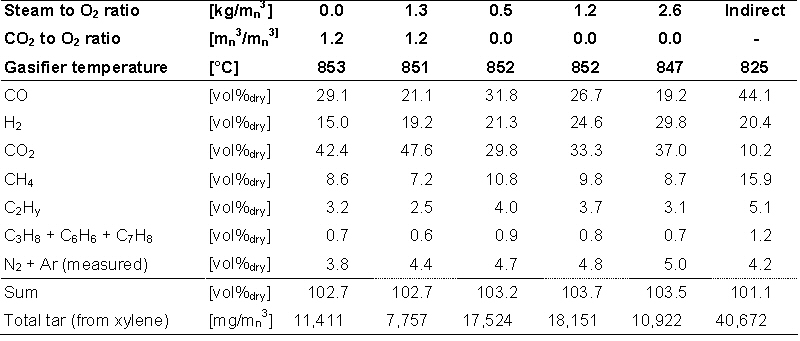Oxygen-blown gasification results
An alternative route for the production of a nitrogen-free product gas is oxygen-blown fluidized bed gasification. To prevent local hotspots in the reactor the oxygen is normally diluted with steam or CO2. In a lab-scale bubbling fluidized bed experiments at ECN gasification conditions with varying ratios of steam and CO2 to O2 ratios were investigated. The results are presented in the table below. As a reference the typical gas composition for the indirect MILENA gasifier is given in the most right column.

As expected, the methane content drops with increasing steam to O2 and CO2 to O2 ratio. The decrease on dry gas basis is mainly caused by the dilution by CO2 or H2 that is produced from steam by the CO shift reaction. A low steam or CO2 to O2 ratio produces a product gas with the highest CH4 content, which is desired for SNG production. A low amount of CO2 or steam also increases the gasifier efficiency, because less 'inert' gas needs to be heated to the process temperature.
A certain amount of oxygen dilution is required to prevent possible agglomeration. At standard lab-scale experiments with oxygen blown gasification, a steam oxygen ratio of 1.8 kg/mn3 is typically applied at ECN. Under these conditions the gasifier can operate without agglomeration problems.